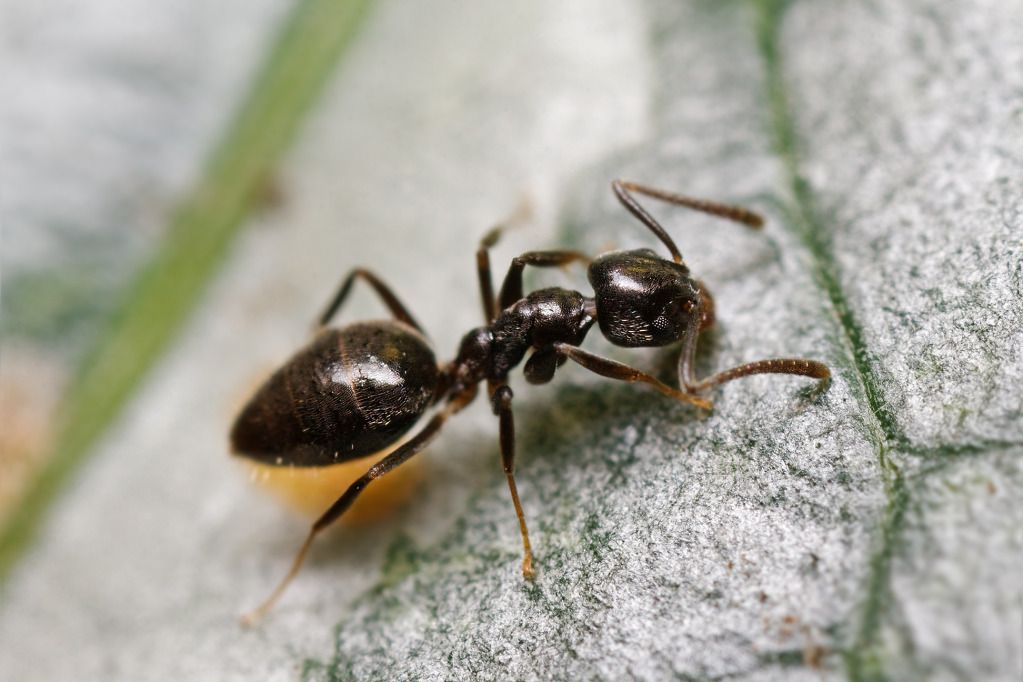Post by Deleted on Apr 14, 2012 1:55:31 GMT 1
[bg=a3b44f][atrb=border,0,true] |
[bg=fbd9bd] Photo from www.wikipedia.com |
[bg=a3b44f] |
| [bg=fbd9bd] Taxonomy: Dolichoderinae (Tapinoma) Colony type:Polygynous (Multiple queens)/Monogynous (One queen) - Dependent on location Queen: Fully Claustral (Though colonies may reproduce by ‘budding’) Color: Jet Black. Some dark brown variations are known. Size: Queen 4-5.5 mm / Workers 2.5-3.5 mm Distribution: US, also as far North as Canada. Nutrition: Honey water, fruits, small insects (Note: These ants do not adapt well to standard foods.) Temperature:Room temperature - 1-2 degrees warmer Hibernation: Not necessary, but advised. Air humidity: Moderate climate Nest building: Natural; sand, soil, loam. Artificial; Pumice, Y-Tong, Plaster, Glass, ect. (Colonies often live under objects and rarely dig very deep into the ground.) Planting: Not Necessary (These ants enjoy farming aphids if given the chance.) Class: Medium |
[bg=a3b44f] |
| [bg=fbd9bd] Tapinoma sessile is a very small ant known for it’s odd smell when crushed. They are often called odorous house ants for this reason. Colonies normally have many queens and between 500 and 7,000 workers at any given time. T. sessile queens often lay eggs daily, and aren’t much larger than their workers. These ants use a chemical stored in their gasters for defense, though they are quite soft-bodied and fragile. They normally use their numbers rather than chemical warfare. Tapinoma sessile is a notorious pest in the United States, and they often reside in homes. Though they have relatively large colonies, these ants require little water and room, due to their size. One can fairly easily identify them by crushing a few workers and seeing if they emit a coconut-like odor. I was amazed at how powerful the smell actually is. (Please do not destroy an entire colony in order to feel as if you are in the tropics. They make artificial scents if that is what you are interested in.  ) ) |
[bg=a3b44f] |
| [bg=fbd9bd] Tapinoma sessile is almost never found with single queens in the NW region and often reproduce by ‘budding’ as well as Nuptial flights. After mating, queens will either return to their parent nest or join up with other queens to found a new colony. Some colonies in other areas do reproduce with normal nuptial flights. Technically, their colonies could go on forever in perfect conditions. Queens are said to only lay a few batches of eggs a year. |
[bg=a3b44f] |
| [bg=fbd9bd] Odorous house ants seem to prefer their nests dryer than most. Because of their small size, formicariums will last long, and colonies can get quite large, quickly. T. sessile can be kept in Plaster, Hydrostone, Y-Tong (Rarely), Pumice, Slim Nests, Tanks, and of course trusty test tubes. |
[bg=a3b44f] |
| [bg=fbd9bd] Tapinoma imparis eat insects, nectar, honey, sugar water, fruits. They also need access to fresh water at all times. Oddly enough, colonies often have a hard time adapting to the standard ant keeping diet. One should experiment and vary the foods available. |
[bg=a3b44f] |
| [bg=fbd9bd] T. sessile does not shoot formic acid, but do use other chemicals for defense. They are fairly challenging to keep, because of their small size and picky diet. Petroleum Jelly/Vaseline is often used as an escape deterrent. Foraging workers often have partners. |
[bg=a3b44f] |
| [bg=fbd9bd] Tapinoma sessile hibernate in the wild and normally wake up in March-April. It is advised that they are hibernated in order to stimulate the queens into laying again. |
[bg=a3b44f] |
| [bg=fbd9bd] |
Colony moving locations

Alex Wild
